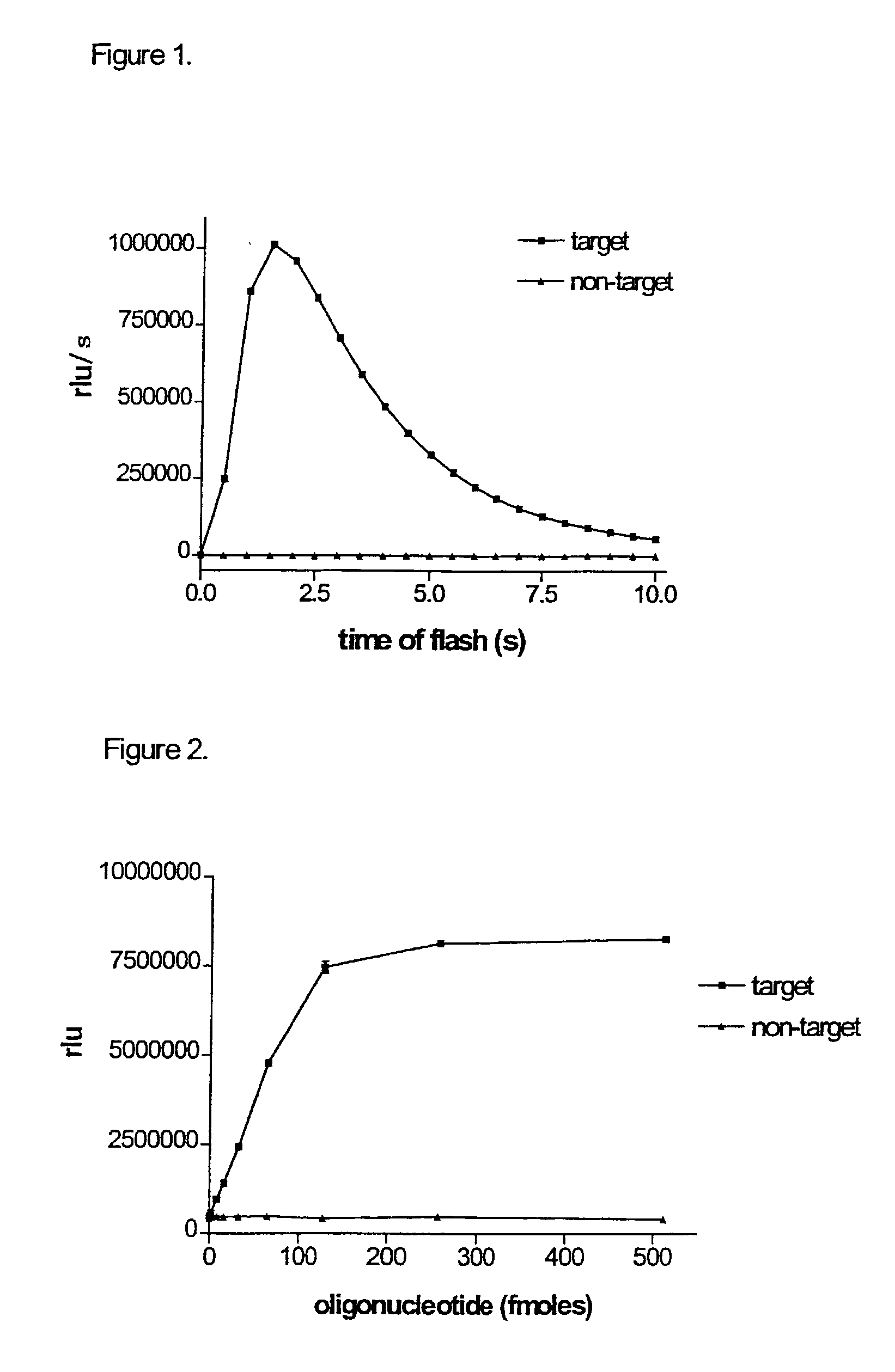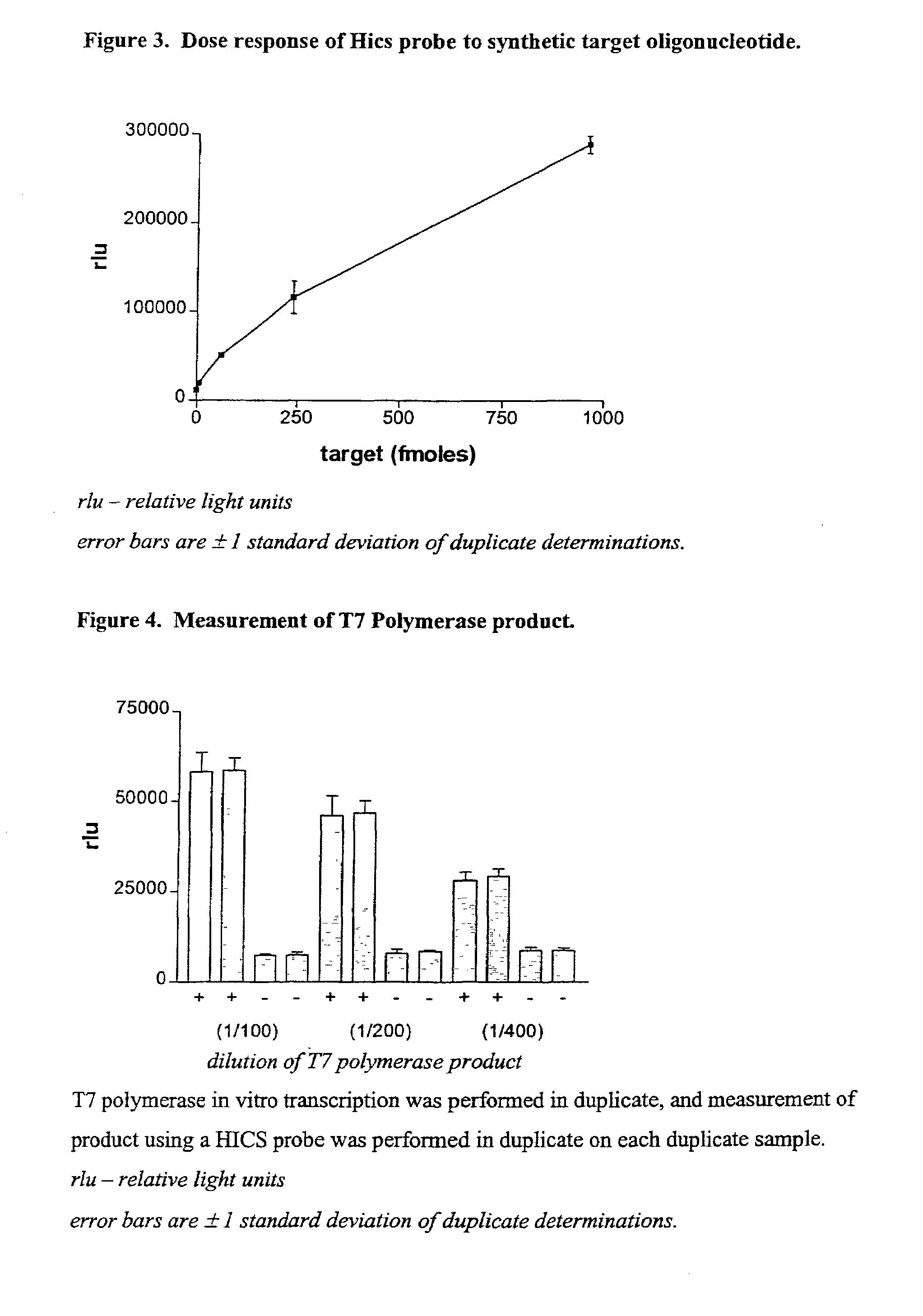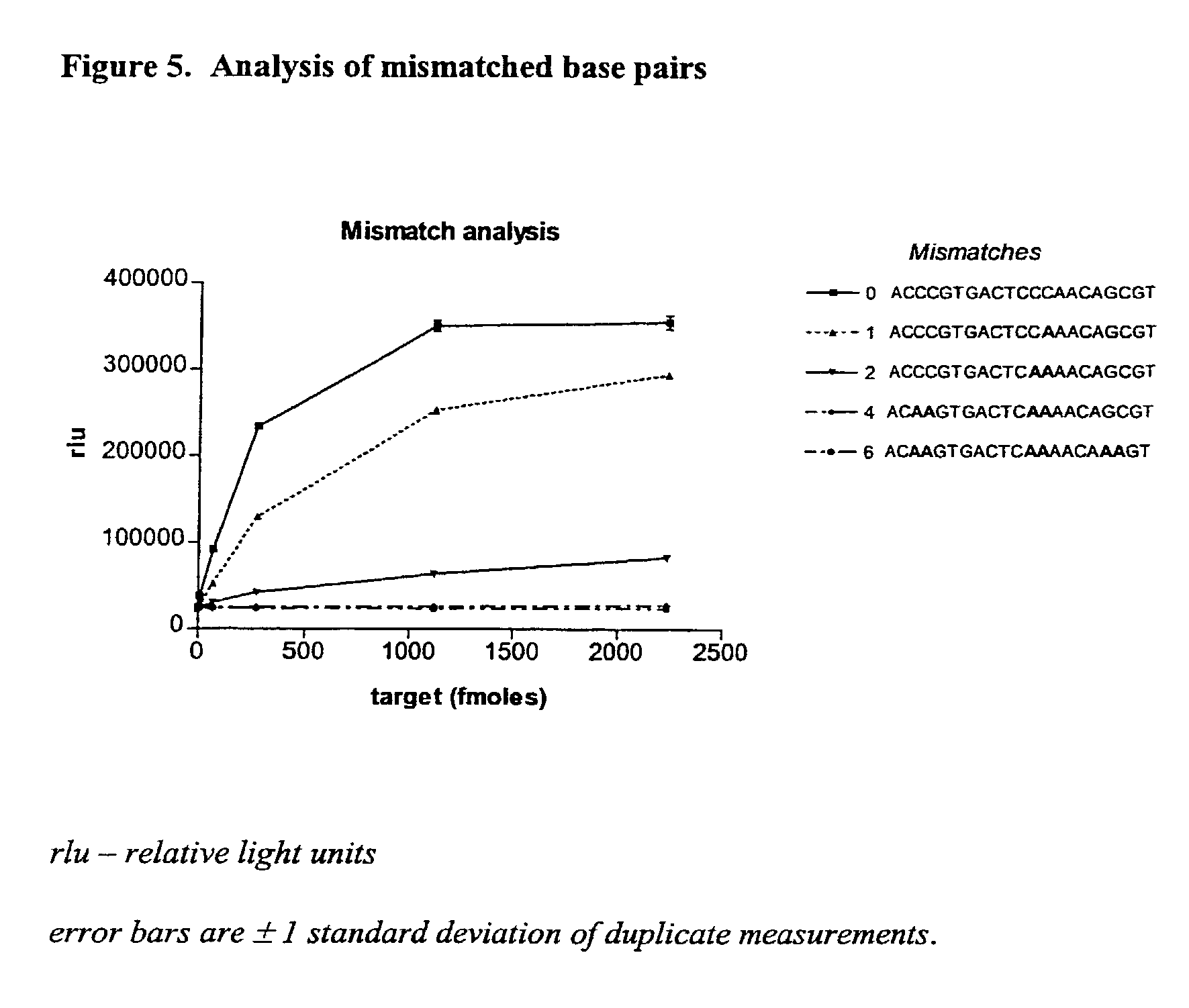Monitoring oligonucleotide binding processes using chemiluminescence quenching
a technology of oligonucleotide binding and quenching, which is applied in the direction of organic chemistry, biochemistry apparatus and processes, instruments, etc., can solve the problems of not being widely used, fluorescence emission observed, and loss of quenching effect of acceptors
- Summary
- Abstract
- Description
- Claims
- Application Information
AI Technical Summary
Benefits of technology
Problems solved by technology
Method used
Image
Examples
examples
1. Source of the Oligonucleotide.
[0061]The following oligonucleotide was synthesised using established methods by a commercial supplier. The sequence was as follows,
CCGGTCCAGGTGGAGCAATGATCTTGATCTTCATGACCGG (SEQ ID No 1). The oligonucleotide was supplied with linkers at both ends, with a free amine group at the end of one linker and a trityl protected thiol group at the end of the other.
2. Synthesis of Dibromo-acridinium Ester (AE-NHS).
3-(3,5-Dibromo-4-hydroxyphenyl)propanoic acid
[0062]To a stirred solution of 3-(4-hydroxyphenyl)propanoic acid (1.011 g, 6.020 mmol) in glacial acetic acid (50 ml) at ambient temperature was added Br2 (0.620 ml, 1.901 g, 12.03 mmol). The mixture was stirred in the dark for 70 h, after which evaporation of the solution in vacuo left a residue of 2.401 g. The residue was dissolved in diethyl ether (70 ml), and the solution was washed with saturated NaCl aq. (40 ml×3), dried (Na2SO4) and evaporated to leave a white powder (1.902 g). The product was recryst...
PUM
| Property | Measurement | Unit |
|---|---|---|
| wavelength range | aaaaa | aaaaa |
| wavelength | aaaaa | aaaaa |
| distances | aaaaa | aaaaa |
Abstract
Description
Claims
Application Information
 Login to View More
Login to View More - R&D
- Intellectual Property
- Life Sciences
- Materials
- Tech Scout
- Unparalleled Data Quality
- Higher Quality Content
- 60% Fewer Hallucinations
Browse by: Latest US Patents, China's latest patents, Technical Efficacy Thesaurus, Application Domain, Technology Topic, Popular Technical Reports.
© 2025 PatSnap. All rights reserved.Legal|Privacy policy|Modern Slavery Act Transparency Statement|Sitemap|About US| Contact US: help@patsnap.com



